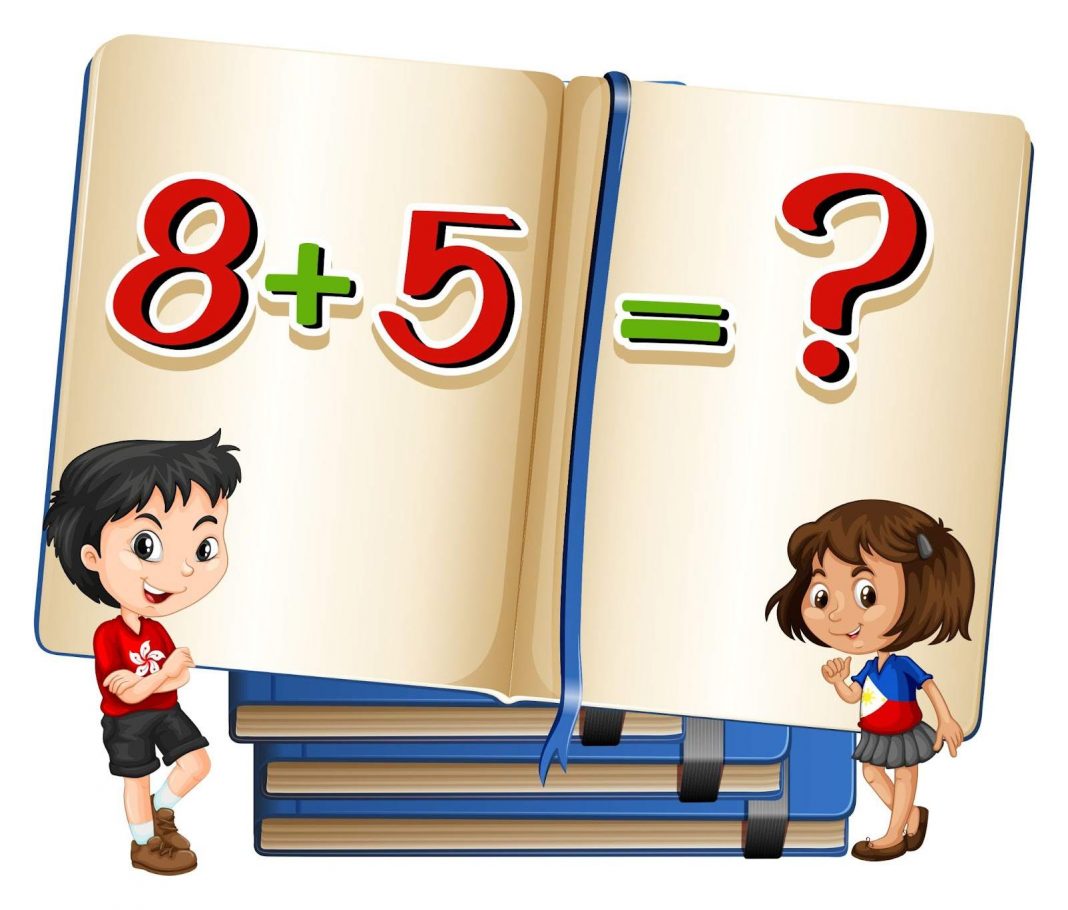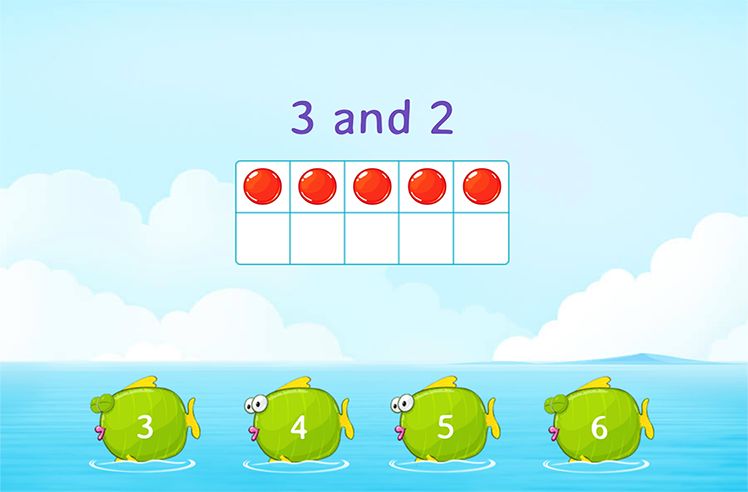Mathematics is a fundamental skill that every child should learn. It’s not just about numbers; it’s about developing problem-solving abilities and logical thinking. But let’s be honest, math can sometimes feel a bit boring. That’s where fun math questions and answers come in!
Math & ELA | PreK To Grade 5
Kids see fun.
You see real learning outcomes.
Watch your kids fall in love with math & reading through our scientifically designed curriculum.
Parents, try for free Teachers, use for free
In this blog, we’re going to make math exciting for kids. We’ll do this by presenting fun math questions for kids that will engage young minds and make them look forward to solving math problems.
Ready to make math even more fun? Check out these interactive math games!
Related Reading: Best Fun Math Trivia Questions and Answers for Kids
Discover 17 fun and Engaging Math Questions That Make Learning Enjoyable for Kids!
- A grandmother, a mother, and a daughter have a total age of 120 years. The grandmother is twice as old as the mother was when the daughter was half the age she will be in 10 years. How old is each one now?
Answer: Grandmother is 70 years old, mother is 40 years old, daughter is 10 years old.
Solution:
Let G = Grandmother’s age, M = Mother’s age, D = Daughter’s age.
G + M + D = 120.
G = 2(M – D/2) when D was half the age she will be in 10 years (D + 10).
Solving these equations: G = 70, M = 40, D = 10.
Play these algebra games to master the art of solving simultaneous equations through engaging algebra challenges:
- Match the decimal to its equivalent fraction: 0.5, 0.75, 0.25.
Answer: 0.5 = 1/2, 0.75 = 3/4, 0.25 = 1/4.
Solution:
Convert each decimal to a fraction and simplify:
0.5 = 5/10 = 1/2.
0.75 = 75/100 = 3/4.
0.25 = 25/100 = 1/4.
Play these games to strengthen your understanding and manipulation of fractions and decimals in everyday math:
- If you’re running a race and pass the person in second place, what place are you in now?
Answer: You are now in second place.
Solution:
If you pass the person in second place, you take their place, so you are now in second place.
- What number does not belong in the following series: 2, 3, 6, 7, 8, 14, 15, 30?
Answer: The number 8 does not belong.
Solution:
The pattern is adding 1, then multiplying by 2, and repeating.
2, 3 (2+1), 6 (3×2), 7 (6+1), 14 (7×2), 15 (14+1), 30 (15×2).
8 does not fit this pattern.
Play these games to develop your skills in identifying and analyzing number patterns and sequences:
- The Age Riddle: My age this year is a multiple of 5. Next year, it will be a multiple of 6. How old am I?
Answer: You are 60 years old.
Solution:
Find a number that is a multiple of 5 this year and a multiple of 6 next year.
The least common multiple of 5 and 6 is 30, but 30 doesn’t satisfy the condition (30+1 is not a multiple of 6).
The next multiple of 5 that satisfies the condition is 60 (since 61 is a multiple of 6).
Play these games to deepen your knowledge of multiplication and improve your ability to determine divisibility:
Related Reading: Best Math Riddles for Kids with Answers
- If you have two coins that add up to 30 cents, and one of them is not a nickel, what are the two coins?
Answer: The two coins are a quarter (25 cents) and a nickel (5 cents).
Solution:
If one is not a nickel, the other can be. So, one coin is a nickel, and the other must make up the remaining 25 cents, a quarter.
Make your kids understand the concept of Money with these fun games:
- Take any three-digit number where the digits decrease (like 321). Now, reverse it (123) and subtract the smaller number from the larger one. What’s special about the result?
Answer: The result is always a multiple of 11.
Solution:
Let’s take an example: 321 – 123.
This subtraction always results in a number whose digits add up to 9 (e.g., 198).
The difference between the hundreds and units digit is always 2, and the tens digit is 9.
This pattern always results in a multiple of 11.
- You have two pieces of fruit: a 300-gram apple and a 0.5-kilogram orange. Which one is heavier, and by how much?
Answer: The orange is heavier by 200 grams.
Solution:
The apple weighs 300 grams.
The orange weighs 0.5 kilograms, which is 500 grams (since 1 kilogram = 1000 grams).
The difference is 500 grams – 300 grams = 200 grams.
Play these games to excel in unit conversion of weight and enhance your arithmetic accuracy and speed:
- A playground is shaped like a rectangle with an area of 100 square meters. What is the new area if the length is halved and the width remains the same?
Answer: The new area is 50 square meters.
Solution:
Original area = 100 square meters.
If the length is halved and the width remains the same, the new area is half of the original area.
New area = 1/2 ×100=50 square meters.
Play these games to master area calculations and explore geometric shapes in a fun, interactive way:
- A snake is lying in the sun, making a perfect square. If the snake is 4 meters long, what is the perimeter it forms?
Answer: The perimeter is 16 meters.
Solution:
If the snake forms a square, each side is 4 meters / 4 = 1 meter.
Perimeter of a square = 4 times the side length = 4 x 1 meter = 4 meters.
Play these games to improve your skills in calculating perimeters and understanding the dimensions of various shapes:
- Two clocks are set to the correct time at noon. One clock gains 2 minutes every hour, and the other loses 3 minutes every hour. When will they first show the same time again?
Answer: They will show the same time again at 1:00 AM, 11 days later.
Solution:
The first clock gains 2 minutes every hour, and the second loses 3 minutes every hour, a total difference of 5 minutes per hour.
They will show the same time when the total difference is 12 hours (720 minutes).
Time to show the same time again = 720 divided by 5 minutes/hour= 144 hours.
144 hours is 6 days (6 x 24 hours) plus 0 hours, so at 1:00 AM, 11 days later.
Play these games to sharpen your time calculation skills and excel in managing and interpreting time-related data:
- You have a piggy bank with $1.10 inside it. It is made up of 4 coins, and only one of them is not a nickel. What coins are in the piggy bank?
Answer: The coins are two half-dollars, one quarter, and one nickel.
Solution:
Total amount = $1.10, with 4 coins, and only one is not a nickel.
Three nickels make $0.15.
The remaining amount is $1.10 – $0.15 = $0.95.
This can be made with two half-dollars ($1.00) and one quarter ($0.25), but since we need exactly $0.95, it’s two half-dollars and one nickel.
- Think of a number. Multiply it by 3. Add 6. Divide by 3. Subtract 2. The result is the original number. What’s the trick here?
Answer: The operations cancel each other out, returning you to the original number.
Solution:
Let the original number be x.
Add 6: 3x + 6.
Divide by 3: (3x+6)/3= x+2
Subtract 2: x + 2 – 2 = x
- A bus number is a three-digit number where the first digit is the sum of the other two. If the second digit is 3 and the third digit is 2, what is the bus number?
Answer: The bus number is 532.
Solution:
The first digit is the sum of the second and third digits.
Given the second digit is 3 and the third digit is 2, the first digit is 3 + 2 = 5.
Therefore, the bus number is 532.
Play these games to enhance your addition skills:
- If you have a shape with 4 sides and 4 angles, and its mirror image looks exactly the same, what shape could it be?
Answer: The shape could be a rectangle or a square.
Solution:
Both a rectangle and a square have 4 sides and 4 angles.
Their mirror images look exactly the same as the original shapes.
- If you count apples in twos, you have one left over. If you count them in threes, you have two left over. If you count them in fours, you have three left over. If you count them in fives, you have four left over. But if you count them in sixes, you have none left over. What’s the smallest number of apples you could have?
Answer: The smallest number of apples is 59.
Solution:
The number must satisfy the following conditions:
When divided by 2, leaves a remainder of 1.
When divided by 3, leaves a remainder of 2.
When divided by 4, leaves a remainder of 3.
When divided by 5, leaves a remainder of 4.
When divided by 6, leaves no remainder.
The smallest number that fits all these conditions is 59.
- Four people need to cross a bridge at night. They have one flashlight, and the bridge is too dangerous to cross without. The bridge can only hold two people at a time. The people walk at different speeds: one takes 1 minute, another 2 minutes, the third 5 minutes, and the last 10 minutes. How can they all cross the bridge in 17 minutes?
Answer: They can all cross the bridge in 17 minutes.
Solution:
First, the 1-minute and 2-minute people cross (2 minutes).
The 1-minute person returns with the flashlight (1 minute, total 3 minutes).
The 5-minute and 10-minute people cross together (10 minutes, total 13 minutes).
The 2-minute person returns with the flashlight (2 minutes, total 15 minutes).
Finally, the 1-minute and 2-minute people cross together again (2 minutes, total 17 minutes).
Related Reading: Best Math Brain Teasers for Kids [with answers]
Conclusion
We’ve explored some of the best maths questions for kids that turn the often-dreaded subject into an enjoyable adventure. These fun math problems have shown that learning math can be exciting and interactive.
Whether you’re a parent looking to engage your child in learning or an educator searching for new ways to make math enjoyable, these best math questions have hopefully inspired you.
Discover the joy of learning math with a personalized experience.
Frequently Asked Questions (FAQs)
What makes for the best math questions for kids?
Best math questions for kids are those that strike a balance between being challenging and engaging. They should encourage critical thinking while still being accessible. Look for questions that relate to real-life scenarios, as these tend to be more relatable and interesting for young learners.
Can you share some examples of fun math problems for children?
Absolutely! Fun math question answers can include counting objects around the house, calculating simple recipes, or solving puzzles that require basic math operations. For instance, you can ask your child how many candies are left in a jar after taking some out or how much change they should receive after buying a toy with a given amount of money.
Are there easy math questions with answers available for kids?
Yes, there are plenty of easy math questions and answers for children. These questions are designed to build confidence and introduce fundamental concepts. Examples include addition and subtraction problems involving small numbers, basic geometric shapes, or asking kids to recognize patterns in sequences.

































































